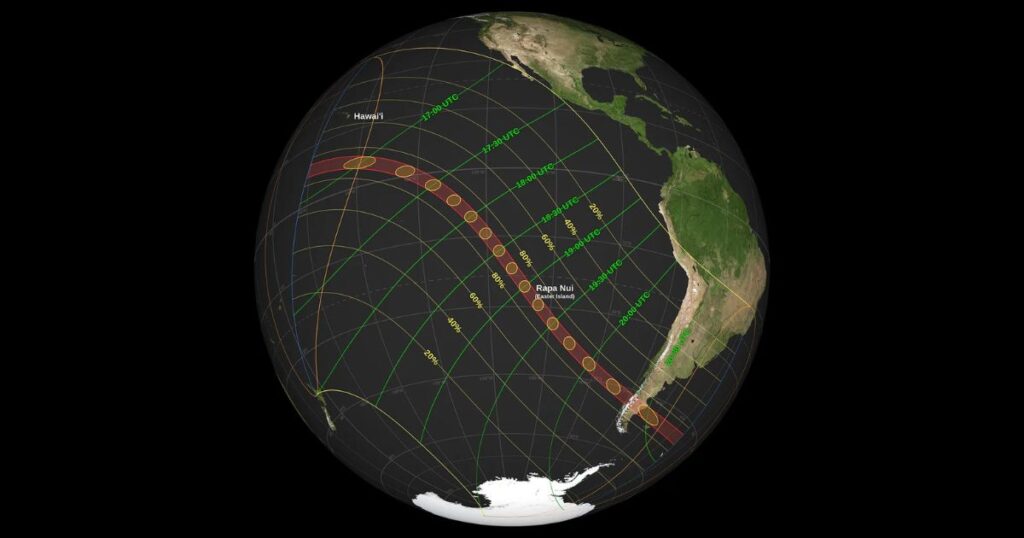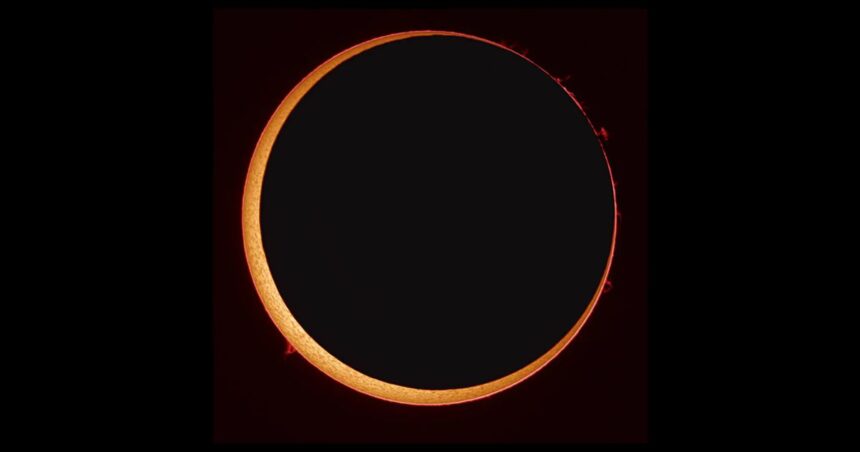Skygazers have excellent astronomy news: a fantastic event will take place. The annular Solar eclipse will occur within a few days in the southern hemisphere, so people in this hemisphere can take advantage and see the annular eclipse. During this eclipse, the Moon will not completely cover the Sun; instead, it will leave a ring of sunlight around the Moon that will create a “ring of fire” effect.
The speed of this solar eclipse depends on your location. This means that in some places, the annular solar eclipse will pass incredibly fast, while in others, it will be slower. This variation happens because the Earth is round, and the moon’s shadow moves across a curved surface.
How Fast Will It Travel?
The speed of an annular solar eclipse will change as it keeps moving across Earth’s curved surface. At its fastest, the moon’s shadow will travel at an astonishing speed of over 6 million miles per hour (10 million kilometers per hour) in some locations.
This is faster than anything we can imagine on our Earth. The fastest man-made object ever in space is the Parker solar probe, which is traveling at a speed of 635,266 km per hour, and still, it is slower than the speed of an annular solar eclipse.
In other areas, the speed will be much slower, around 1,278 miles per hour (2,057 kilometers per hour), which is about the speed of a fighter jet.
Why Does the Speed Change?
The speed of the annular solar eclipse changes because of several factors. However, there are two main factors, the first of which is the distance between the Earth and the Moon. The distance between the Earth and the Moon is not constant; as distance decreases, the speed of the annular solar eclipse shadow moves faster. When the Moon is farther away from Earth, the shadow moves slower.
Daily News: This Weekend, Don’t Miss Comet Tsuchinshan-ATLAS Lighting Up the Sky
The second factor is the curvature of the Earth, which affects the speed. The moon’s shadow travels across a curved surface, which means the distance it covers changes constantly. This curvature causes the shadow to move at different speeds in different places.

Where Will It Be Visible?
The annular solar eclipse on October 2 will be visible from several countries in the Southern Hemisphere. People who live in parts of South America, including Argentina and Chile, will have a great view of the “ring of fire”.
People who live in countries like American Samoa, Antarctica, Argentina, Baker Island, U.S. Minor Outlying Islands, Brazil, Chile, Christmas Island, Falkland Islands, Hawaii, USA, New Zealand, Palmyra Atoll, U.S. Minor Outlying Islands, Samoa, Tuvalu, South Georgia and South Sandwich Islands, Paraguay, Mexico, French Polynesia, Pitcairn Islands, Uruguay, Cook Islands, Clipperton Island, Tokelau, Niue, Fiji, Tonga, Wallis and Futuna, people will see a partial solar eclipse.
It is very important to remember that looking directly at the Sun during an annular solar eclipse is not safe. The Sun’s rays can damage your eyes. To watch the eclipse safely, you need special solar eclipse glasses. These solar eclipse glasses are designed in such a way that the harmful rays of the Sun will not harm your eyes.
What Makes This Eclipse Special?
In case you didn’t know, an annular eclipse completely differs from a total solar eclipse. In a total solar eclipse, the moon completely covers the Sun, and the sky becomes dark for a short time. In an annular solar eclipse, the Moon is farther away from the Earth, so it can not cover the Sun completely. In an annular solar eclipse, we can see the beautiful “ring of fire” effect.
Daily News: Stunning ‘Hot Jupiter’ Exoplanet Brought to Light by Citizen Scientists
This annular solar eclipse is also special because of its speed. The moon’s shadow will move incredibly fast in some places, making it a unique event to watch. Scientists and eclipse enthusiasts are excited about this event because it offers a chance to study the moon’s shadow and its effects on the Earth.
How to Prepare for the Eclipse
If you want to see the Annular Solar Eclipse on October 2, you need to prepare a few things. The first is to buy solar eclipse glasses, which you can also find in online stores. These classes are not very expensive, but they will protect your eyes from the harmful rays of the Sun.
Second, find out the best time to watch the eclipse in your area. The eclipse will start in the morning and end in the afternoon. But the exact time will depend on your location, so check online for exact times and the best places to watch the eclipse.
Fun Facts About Eclipses
- Eclipses have been observed for thousands of years. Ancient civilizations recorded them and tried to understand their meaning.
- The word “eclipse” comes from the Greek word “ekleipsis,” which means “abandonment” or “downfall.”
- There are two types of Solar eclipse: Total solar eclipse and Annular solar eclipse.




